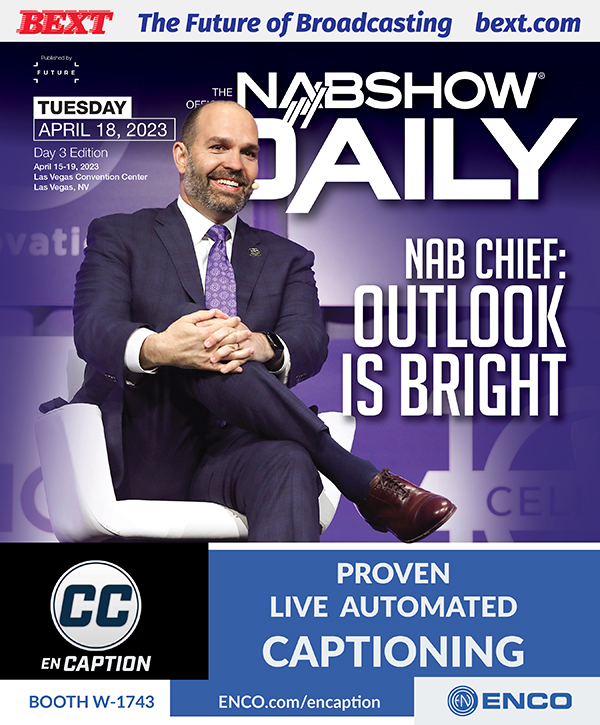‘Future of Television’ group will help set regulation for NextGen TV era
BY JON LAFAYETTE, BROADCASTING & CABLE
FCC Chairwoman Jessica Rosenworcel said the commission will work with NAB on ways to complete the change to ATSC 3.0 and compose new rules and regulations once the transition is complete.
Speaking at NAB Show, Rosenworcel emphasized the importance of NextGen TV to viewers and broadcasters looking to compete with digital rivals.
While broadcasters have the opportunity to build new digital business and revenue sources using the new technology, maintaining a trusted source of local news and community information is urgent. “I truly believe it is important for the future of our democracy,” Rosenworcel said.

“We have seen an explosion of programming from new sources, but so much of it is filtered through algorithms that favor enragement, privilege the angriest voices and segregate us into separate information bubbles,” she said. “We are going to need a common set of facts and survey after survey tells us that local broadcasters are still the most trusted source of news. Lean into it, because it makes a difference.”
Rosenworcel noted that ATSC 3.0 signals are already available in 60 percent of the U.S. and that TV manufacturers are starting to include ATSC 3.0 tuners in their latest sets.
“Now that we finally have ATSC 3.0-compatible equipment in stores and headed to homes, we could really start to see the promise of NextGen TV become a reality in the not-too-distant future,” she said. “But it’s going to take some work.”
Rosenworcel said NAB leadership approached her about developing a group to work through the “big-picture” issues associated with ATSC 3.0.
As a result, “we’ve pulled together a public-private initiative designed to consider some of the challenges ahead from both industry and consumer perspectives,” she said. “We’re calling it The Future of Television Initiative.”
The initiative will gather government and public interest stakeholders to develop “a roadmap for the transition to ATSC 3.0 in a way that serves the public interest,” Rosenworcel said.
It will have three working groups. The first will take a consumer perspective, especially because ATSC 3.0 cannot be received by sets with current TV technology.
“We can’t saddle consumers with unworkable sets or big expenses just to continue watching the local television they know and trust, so we’re going to have to figure this out,” she said.
The second group will look at completing the transition, which has been voluntary to this point. There is no set date for when ATSC 1.0 will go dark, as analog TV signals did. The group will determine “what are the conditions we need to get to the other side,” she said, “We’re going to have to develop a vision for everything from the state of simulcasting to the capacity for multicasting to the right labeling standards for tuners.”
The third working group will look at post-transition rules. The FCC has created interim rules allowing multicasting on a temporary basis to balance the need of the industry with the cost to consumers.
“When we reach the future, we’re going to need clear rules and a clear understanding of how they fit in communications law,” Rosenworcel said.
The initiative will be hosted by NAB, but the FCC will be an active participant.
“The future of television initiative is going to be reaching out to stakeholders soon because this big-picture dialogue needs big-picture participation to be successful,” Rosenworcel said.


